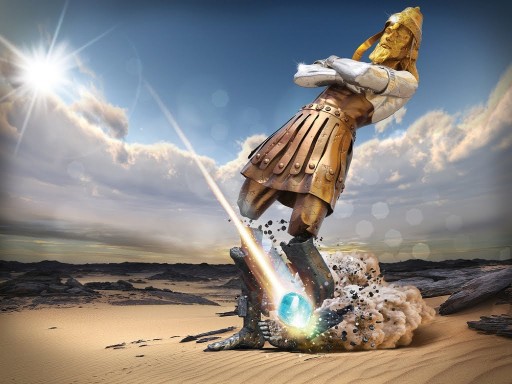“Therefore the Jews … made the fourteenth day of the month Adar a day of gladness and feasting, a good day, and of sending portions one to another.” (Esther 9:19)
–

–
Purim.
Purim is one of the happiest days celebrated by Jews all over the world. It is a celebration of the deliverance of the Jewish People from a Persian plot to annihilate them in about 352 BC.
This year, it begins on Sunday evening, March 12, 2017. In English, it is “The Feast of Lots!” “Pur,” is Hebrew for the word, “lot,” like when you draw “lots. Any time you put “im” at the end of any Hebrew word, it becomes plural.
–
It is celebrated kind of like our Halloween here in the West where everyone dresses up in various costumes. Carnivals and parades occur throughout Israel in celebration of this holiday.
–
Let’s look deeper into this beautiful story of Esther. It is so full of pictures and meanings which apply to us in 2017, and a wonderful message for such a time as this.
–
Chapter 1: The Festival Of Wine.
Esther 1:1-4
“Now it came to pass in the days of Ahasuerus (this was the Ahasuerus who reigned over one hundred and twenty-seven provinces, from India to Ethiopia), in those days when (King) Ahasuerus sat on the throne of his kingdom, which was in Shushan the citadel, that in the third year of his reign he made a feast for all his officials and servants—the powers of Persia and Media, the nobles, and the princes of the provinces being before him— when he showed the riches of his glorious kingdom and the splendor of his excellent majesty for many days, one hundred and eighty days in all.”
–

–
There’s a lot going on in the book of Esther. In the very first chapter, it says that the king of the land threw a “Festival of wine” for all his officials and servants in his capitol city, Shushan. This event occurred in the third year of his reign.
–
The Medes And The Persians.
Do you recall the vision Daniel had of the giant statue? It had a head of fine gold, chest and arms of silver, belly and thighs of bronze, legs of iron all the way down to the toes of iron and clay. This image in King Nebuchadnezzar’s dream foretold of the great kingdoms of this world that would come to power.
–
Medo-Persia was the second greatest kingdom after Babylon, depicted by the silver chest and two arms. (See Daniel 2:2). The two arms are a picture of two kingdoms combined into one: The Media and Persia. They came to power after the overthrow of King Nebuchadnezzar of Babylon, the first and greatest kingdom, depicted by the head of gold.
–
Ahasuerus (his title, not his name) reigned over 127 provinces and that his kingdom extended from India to Ethiopia. He controlled more than 2.9 million square miles (7.5 million square kilometers) of land and spanned three continents: Asia, Africa and Europe. His control extended eastward into India and reached westward to Greece. Its capitals were Persepolis and Susa, with its kings sometimes residing in Babylon.
–

–
The Meaning Of Metals.
Silver, as you know, is not as precious a metal as gold. It paints the picture that the Medo-Persian empire, though vast in area and great in power, actually had less power and control than the Babylonia empire before them. You know, lesser n glory.
King Nebuchadnezzar, on the other hand, was so powerful, he could rescind an edict if he chose. He reigned with absolute authority.
The Medo-Persians, however, could not do that. Once a law was written and sealed with the king’s signet ring, IT COULD NOT BE UNDONE. You’ll see later how this plays out in the story of Esther and the Bible in general.
–
Typologies.
You may have noticed that the word, “King,” in the opening passage is italicized. Translators put the word in there but in the original Hebrew, only the title, “Ahasueras, appears. This was not the king’s name, you understand. The word simply means, “Prince, head or chief.” It was his title. His actual name was, “Xerxes.”
He would later have a son, “Darius,” would also help the Jewish people who had returned to their homeland. They came back after 70 years of captivity in Babylon to rebuild the walls of Jerusalem, a story for another time.
–

–
Great Celebration.
This festival of wine that Ahssuerus inaugurated lasted for 180 days. That’s five months, folks! Ever been to a party that lasted that long? Me either. Ah, but most of you know that God loves to hide meanings in the text because “5” is the number of grace!
This guy had to be VERY rich to throw a party like that, right? Also of note is the fact that he called for this feast “In the third year of his reign.”
–
Hidden in this wonderful story of the redemption of the Jewish people are beautiful pictures of Jesus and assurances that, though we may lose the sense of His presence, He NEVER leaves or forsakes us. We’ll see ample proof of that later on in another part of this amazing story.
–
Wine is a picture of celebration and life. It also depicts the blood shed by The Lamb of God, Jesus. He shed His blood to redeem all of us and not only give us LIFE, but life more abundant.
–
Please follow this link to part 3 and a continuation of this exciting story:
https://emmausroadministries.wordpress.com/2017/03/09/esther-series-part-3-queen-vashti/
No comments:
Post a Comment